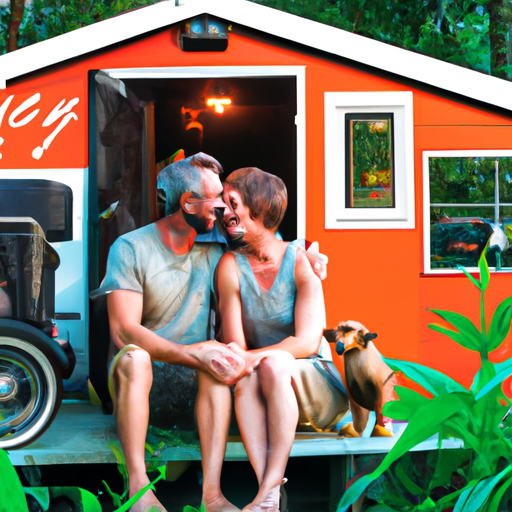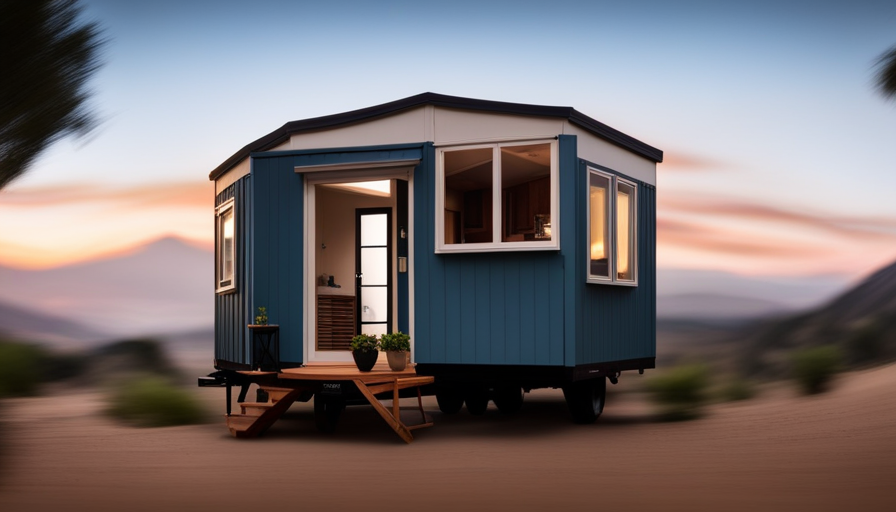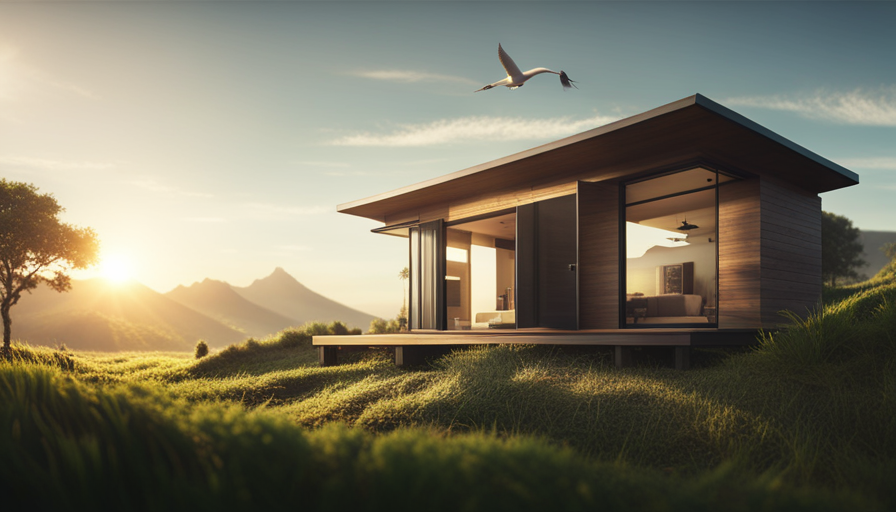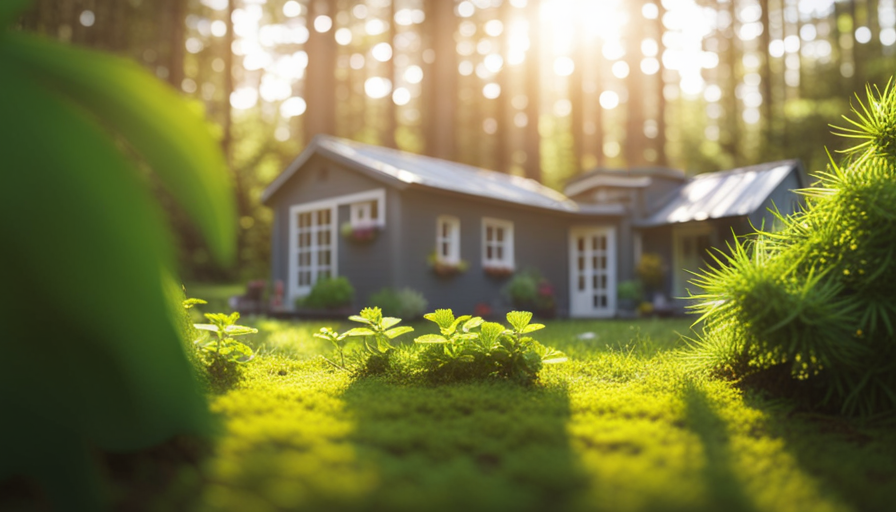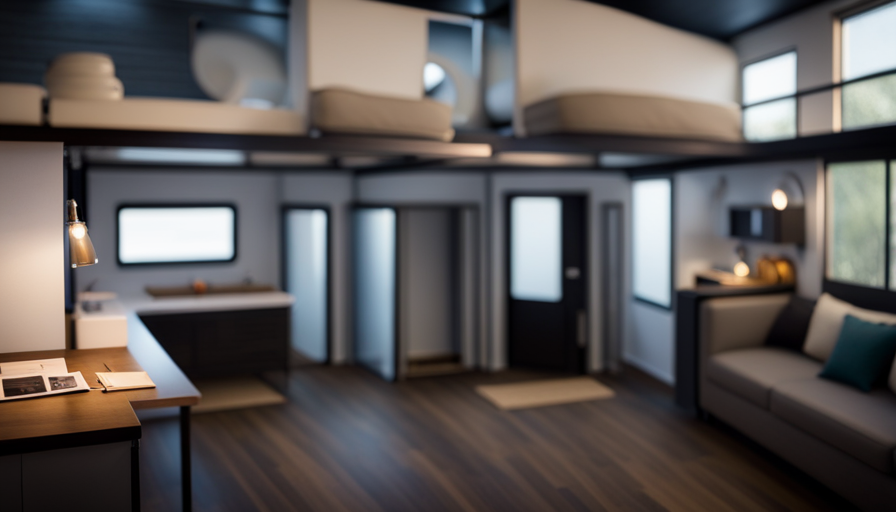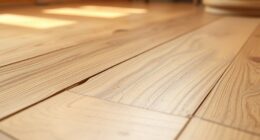In a time when society often values bigger things over smaller ones, it is refreshing to see people embracing minimalism and downsizing to tiny homes. Meet Ashley and Norma-Jean, the owners of a 128 square foot tiny house on wheels, who have skillfully created a comfortable and charming living space within a small area. Their tiny home is not only a budget-friendly way to own a home, but it also promotes a simpler and more environmentally friendly lifestyle.
Despite its small size, the tiny house is packed with impressive features that maximize space and functionality. The interior boasts a well-designed kitchen and pantry, a cozy living room with clever storage solutions, and even a closet.
Ashley and Norma-Jean’s DIY skills have allowed them to transform a bare-bones shell into a cheerful and practical living space that suits their needs and personalities.
In this article, we’ll delve into their journey towards homeownership, explore the unique features of their tiny house, and discuss the benefits of downsizing to a smaller living space.
Key Takeaways
- Ashley and Norma-Jean’s tiny house offers an affordable solution to homeownership while promoting a sustainable lifestyle.
- The well-designed kitchen, pantry, living room, and closet maximize limited space through creative storage solutions such as shelves, hooks, and racks.
- The DIY-finished interior showcases sanding, painting, and shelving, adding to the overall charm of the tiny house.
- Living in a tiny house has allowed the owners to save financially and invest in future plans while enjoying a sense of ownership and independence.
Owners and Home Details
The owners of the 16-foot long, 128-square-foot tiny house on wheels, Ashley and Norma-Jean, in their 20s, have designed their home to maximize every inch of space available. They purchased the bare-bones shell from Incredible Tiny Homes for $30,000 and DIY-finished the interior with sanding, painting, shelving, and creative storage solutions.
Their lifestyle choices have influenced the design of their tiny house. Ashley’s passion for veganism has led her to create an impressive kitchen space where she offers vegan meal prep and delivery service to neighbors.
Their home is a testament to their commitment to sustainable living and minimalism, as they have prioritized closet space, kitchen space, and living room space in their design.
Interior and DIY Solutions
One of the noteworthy aspects of the 128-square-foot tiny house on wheels is its interior design, which emphasizes DIY hacks and space optimization. Despite the limited space, the owners were able to create a cozy and functional living space through creative solutions.
The interior is DIY-finished with sanding, painting, and shelving that added a personal touch to the space. The kitchen is an impressive space where Ashley offers vegan meal prep and delivery service to neighbors. To make the most out of the limited kitchen space, the owners installed shelves, hooks, and racks to maximize storage.
The pantry is also well-organized with a three-tier spice rack, little cabinet, and compact-size utility closet from Target. The living room, which is extra tiny, is also maximized with a storage bench from Aldi used as a TV console. Overall, the interior of the tiny house is a testament to the owners’ creativity, resourcefulness, and determination to make their home functional and beautiful despite its size.
Future Plans and Benefits
Looking ahead, the owners plan to upgrade to a larger space with Rough Cut Tiny Homes, allowing for more room and flexibility in their living arrangements, much like a caterpillar emerging from its cocoon.
The current 128-square-foot tiny house has served them well, but they recognize the need for more space as their lifestyle and business ventures grow.
In addition to the practical benefits of upgrading, the owners are also excited about the emotional benefits of having a larger space to call home.
The financial savings they have experienced by living in a tiny house has allowed them to invest in their future plans, such as upgrading to a larger space and expanding their vegan meal prep and delivery service.
They appreciate the sense of ownership and independence that comes with living in their own house, and the secure parking spot at Acony Bell adds an extra layer of security to their tiny home lifestyle.
Overall, the owners are grateful for the opportunities and benefits that their tiny home has provided, and they look forward to continuing their journey of maximizing cuteness and practicality in their future living arrangements.
Frequently Asked Questions
What inspired Ashley and Norma-Jean to choose the cheerful yellow color for their tiny house exterior?
The cheerful yellow color of Ashley and Norma-Jean’s tiny house exterior was likely inspired by color psychology and design inspiration. Yellow is known to evoke feelings of happiness, optimism, and warmth, making it a popular color choice for homes.
Additionally, the tiny house movement often embraces bright and bold colors to make a statement and stand out, which may have also influenced their decision.
While it is unclear exactly what inspired their specific color choice, it is clear that they have created a visually appealing and inviting exterior that reflects their unique personality and style.
How did Ashley come up with the idea to offer vegan meal prep and delivery service to her neighbors?
Transporting our minds back to the early 2010s, Ashley, the owner of a 128-square-foot tiny house on wheels, came up with the idea to offer vegan meal prep and delivery service to her neighbors.
Her passion for healthy and ethical eating drove her to create a service that catered to those who shared her values.
The service was met with great success, and her neighbors expressed their satisfaction with the delicious meals that were delivered to their doorsteps.
Ashley’s creativity and innovation allowed her to turn her passion for vegan cooking into a profitable venture, while also contributing to the well-being of her community.
The success of her venture is a testament to the importance of identifying niche markets and catering to them with unique and innovative solutions.
What was the biggest challenge Ashley and Norma-Jean faced during the DIY finishing of their tiny house interior?
The biggest challenge Ashley and Norma-Jean faced during the DIY finishing of their tiny house interior was likely the limited space. With only 128 square feet to work with, they had to carefully consider each design choice and storage solution. They likely had to get creative with how they utilized the space, such as incorporating multi-functional furniture and finding unique storage solutions.
Additionally, the DIY aspect of the project may have presented its own set of challenges, such as learning new skills and techniques or dealing with unexpected issues that arose during the process. Despite these challenges, their finished product showcases impressive interior design and showcases their ability to maximize the space available to them.
How did they manage to fit all their clothes in the limited closet space of their tiny house?
Closet space is often a concern for those living in tiny houses, but Ashley and Norma-Jean have successfully maximized their storage options.
Through creative clothing organization techniques, they have managed to fit all their clothes in their limited closet space. Their priorities for closet space were reflected in their DIY finishing, where they incorporated shelving and other storage solutions.
By utilizing available space to the fullest, they were able to create a functional and visually appealing closet that fits all their clothing needs.
Overall, the couple’s success in maximizing storage in their tiny home demonstrates the importance of thoughtful design and organization.
What made Ashley and Norma-Jean decide to upgrade to a larger 400 square feet tiny house with Rough Cut Tiny Homes?
Ashley and Norma-Jean, the owners of a 128-square-foot tiny house on wheels, have decided to upgrade to a larger 400 square feet tiny house with Rough Cut Tiny Homes.
The decision was likely influenced by the challenges they faced in their current living space, particularly with limited closet and living room space.
With a larger tiny house, they can enjoy the benefits of more storage and living space, which may include greater comfort and ease of movement within their home.
Additionally, a larger tiny house provides the opportunity to further maximize their creative storage solutions and potentially expand their vegan meal prep and delivery service.
Overall, the upgrade to a larger tiny house may provide Ashley and Norma-Jean with a more functional and comfortable living space while still maintaining the benefits of homeownership and the ability to park their home in a secure location.
I’m Theodore, and I love tiny houses. In fact, I’m the author of Tiny House 43, a book about tiny houses that are also tree houses. I think they’re magical places where imaginations can run wild and adventures are just waiting to happen.
While tree houses are often associated with childhood, they can be the perfect adult retreat. They offer a cozy space to relax and unwind, surrounded by nature. And since they’re typically built on stilts or raised platforms, they offer stunning views that traditional homes simply can’t match.
If you’re looking for a unique and romantic getaway, a tree house tiny house might just be the perfect option.
